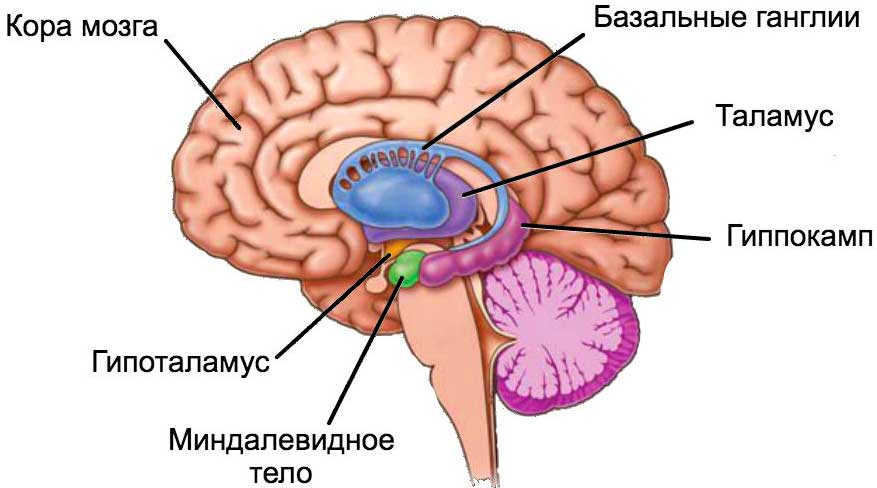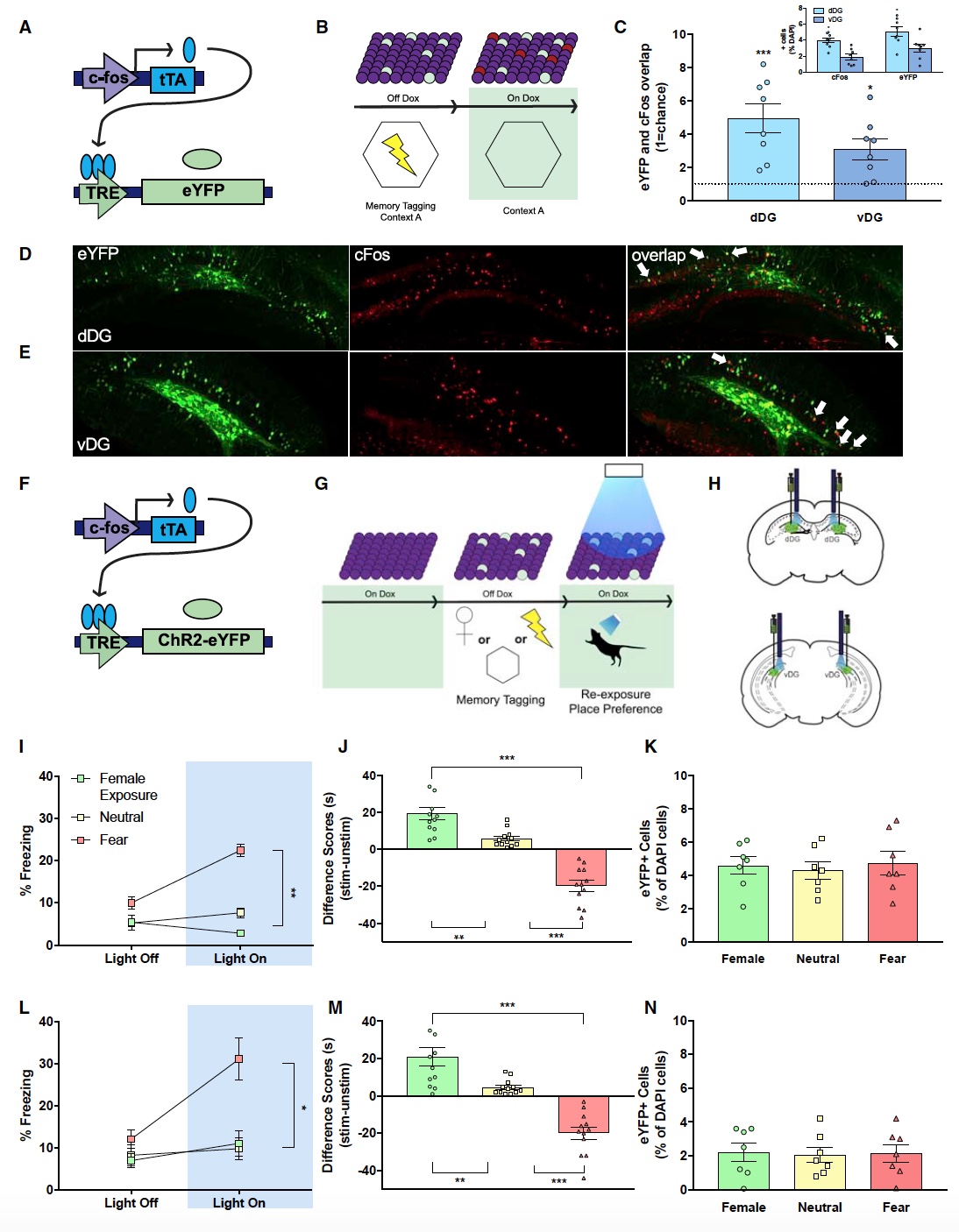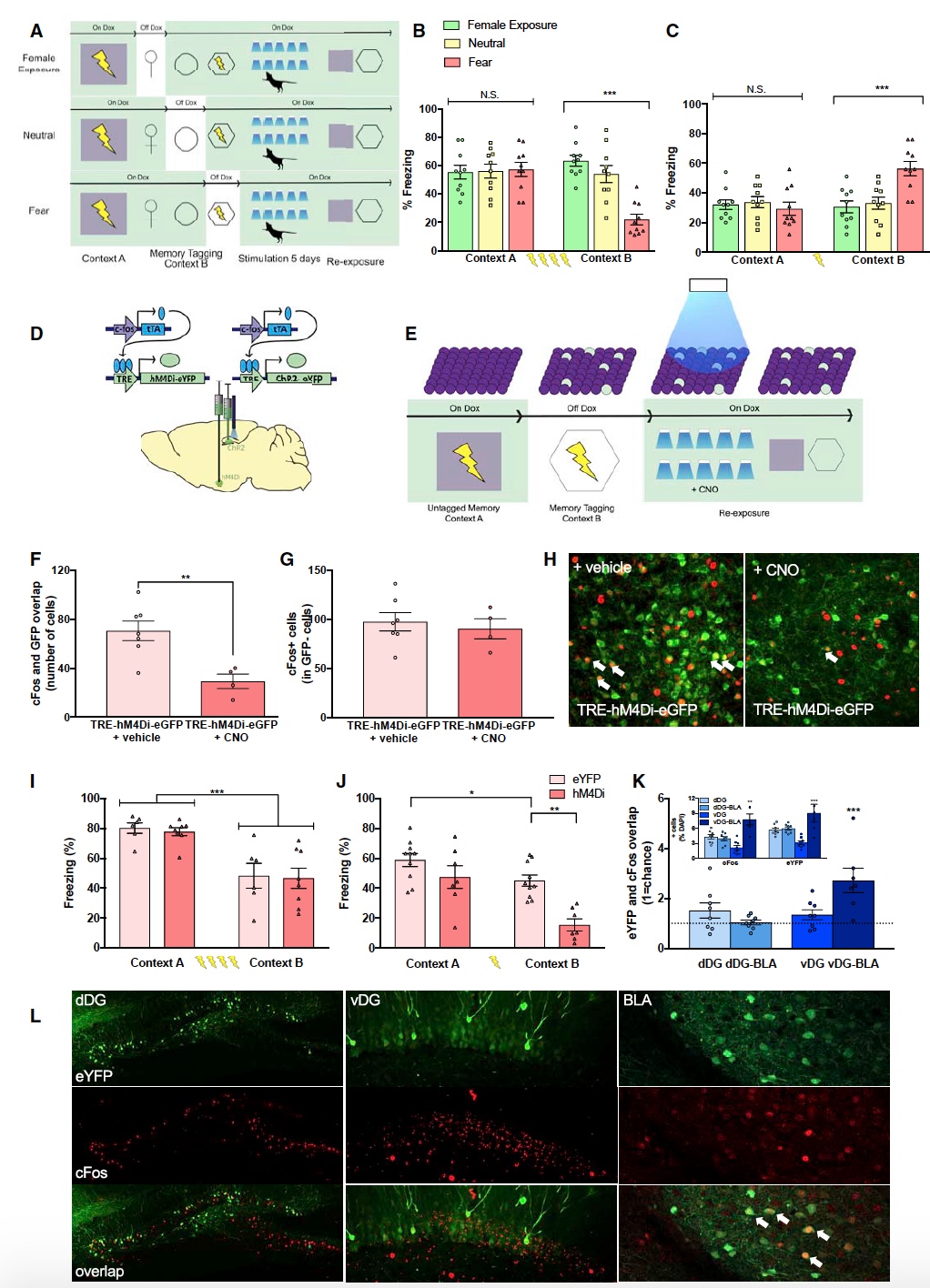Voluntary amnesia: manipulation of the hippocampus to remove painful memories

Every person has memories that he tries to forget. Some of them are just unpleasant, causing sadness, shame, fear, and some can cause serious damage, causing the person the most real mental disorders (PTSD, anxiety disorder, etc.). If it were possible to manipulate human memory, like data on a flash drive, and delete unwanted ones, then it would be easier to deal with such ailments. This is what the research we are examining today will be about, in which scientists point out that stimulating certain cells of the hippocampus can help "erase" some memories and make others brighter. How exactly did the scientists succeed, how complicated is this procedure, and how effective is it in combating mental illnesses? We will look for answers to these and other questions in the report of the research group. Go.
The basis of the study
The main experimental subject in this work is, as we already understood, the hippocampus. This area of the human brain, consisting of 30 million neurons, is responsible for our emotions and for the transition of short-term memory into long-term memory. In addition, the hippocampus also plays an important role in the processing and storage of spatial information, which results in the formation of spatial memory. This aspect of our memories is used by us daily and constantly, and we don’t think about it. The way from home to work, the faces of friends and relatives, how to properly hold the plug, etc. - these are all pieces of our spatial memory. Simply put, it forms everything that surrounds us.
')

Another important task of the hippocampus is, however strange it may sound, forgetting. It is in this part of the brain that information becomes important and is preserved or unimportant and forgotten. However, scientists do not yet have an accurate answer on the criteria for sampling.
With age, the activity of the hippocampus and the renewal of its neurons are slowed down, precisely because a decrease in the hippocampus is one of the most prominent symptoms of Alzheimer's disease.
Scientists point to previously conducted studies in which it was proved that different domains (areas) of the hippocampus are responsible for different emotions and memories: dorsal - spatial and temporal memory and contextual information; ventral - reaction to stress, anxiety and emotional state in general.
Therefore, if you somehow gain control over these specific domains, you can change the mechanism of their work. Previously, experiments were carried out with optical manipulation of cells in the dorsal region of the hippocampus, which made it possible to control the behavioral expression of positive and negative memories. However, it remains to be seen whether the manipulation of the ventral domains of the hippocampus will have a similar effect.
In addition, the researchers note the importance of finding a mechanism for the relationship of memories stored by the hippocampus and human behavior. For it is from how and why exactly this or that information is processed (called from the archives of memory, so to speak), and the manifestation of stress, anxiety, post-traumatic disorder and even depression.
Research results
To begin with, it was necessary to determine which parts of the hippocampus react to what and to what extent.

Image number 1
To do this, scientists used an inducible * viral mixture of AAV9-c-Fos-tTA and AAV9-TRE-eYFP, which was introduced into the dorsal or ventral dentate fascia of the mouse hippocampus (male). This mixture labeled the dentate fascia neurons that expressed the c-Fos gene as a function of doxycycline (Dox). At this point, the experimental mice were observed in front of a neutral environment, that is, they were in a quiescent state and no external stress or rewards were applied ( 1A and 1B ).
Inducible * is an enzyme that is not produced by the cell until its synthesis is induced (activated) by its own substrate or other closely related compound.
The dentate fascia * (dentate gyrus) is a jagged gyrus, located in the depth of the hippocampal groove and turning into a tape gyrus.In mice without Dox, the expression of eYFP (i.e. eYFP +) increased in the dorsal and ventral dentate fascia during the study of environmental information, in contrast to the control group of subjects with Dox ( 1G , 1H , 1J and 1K ).
On the second day, mice showed a significant increase in the number of eYFP + and c-Fos + cells in the dorsal part, and not in the ventral part ( 1C - 1F , 1I and 1L ). This confirms the importance of the dorsal domain of the hippocampus in the process of environmental recognition.
Next, the scientists decided to check the activity of the cells of the dentate gyrus during the formation of fear and during the reproduction of memories associated with it, the next day.
The test mice, as in the previous test, received an injection of the viral mixture, then they stopped giving them Dox. 48 hours after that, the mice were placed in chambers, where 4 weak discharges of electric current (through the chamber floor) were applied to them with a time interval of 180 seconds. After that, the mice were returned to the cells with a neutral atmosphere and again began to give doxycycline (Dox).
The next day, these mice were again placed in shock chambers (in this case, the discharges were no longer used) to reproduce their fear ( 2A and 2B ).

Image number 2
Brain data was collected after 90 minutes of mice in the chamber, after which scientists were able to estimate the number of eYFP and c-Fos cells in the dorsal and ventral dentate gyrus.
As expected, in both parts of the hippocampus (dorsal and ventral), cell reactivation increased significantly ( 2C - 2E ). This is explained by the fact that both these sites play a role in the formation of memories associated with certain emotions.
The intermediate result is as follows: the cells of the dentate gyri in the dorsal region are reactivated after the mice are in a neutral and stressful environment; but the cells from the ventral region are reactivated exclusively after the stress.
In the next stage of the study, scientists set themselves the task of finding out whether the exact optogenetic * activation of cells along the longitudinal axis of the hippocampus will affect behavior associated with appetite and fear.
Optogenetics * is a method for studying nerve cells by introducing opsins (photosensitive receptors) into their membranes that react to light.Experimental mice in the dorsal or ventral area introduced activity-dependent viral cocktail, expressing the channel-rhodopsin-2 (ChR2). After the injection site, optical fibers ( 2F and 2H ) were implanted.
Doxycycline was discontinued to label cells responsible for responding to the following scenarios: neutral setting; stressful situation (application of electric current through the camera floor) and placement in the female's chamber ( 2G ).
Scientists activated fear-related memories through the dorsal or ventral parts of the hippocampus. This led to the fading of the male experimental, which is the standard reaction of mice in an emergency ( 2I , 2J , 2L and 2M ).
Activation of the memories associated with finding the female in the chamber led to the movement of the male to the point of the chamber where the female was. That is, the male remembered that yesterday she was standing in the left corner, for example, and when the hippocampus was activated, he moved exactly there.
But the activation of memories associated with a neutral situation, did not cause any reaction in the male experimental, which is also quite expected ( 2K and 2N ).
The above experiments and their results confirm in a practical way that the dorsal and ventral regions of the hippocampus are involved in the formation of fear and the memories associated with it. Controlling these sites through the reactivation of certain cells allows the experimental expression of fear to be elicited. In other words, these experiments confirmed the fact that it is possible to manipulate memories and emotions through the management of the hippocampus.
Finally, the researchers began to experiment, which had to answer the question - is it possible to make long-term changes in the behavior associated with the memories through external influence.
All the experimental subjects first went through a stage with a stress chamber (setting A), after which the female was placed in the chamber, followed by a neutral setting and again stressful (setting B).
After the preparation, the scientists carried out the procedure for reactivation of the dorsal and ventral cells of the hippocampus of mice (10-minute sessions, 2 times a day for 5 days). After another 24 hours after reactivation, a behavioral test was conducted without the use of light stimulation ( 3A ).

Image number 3
The procedure of stimulation of the dorsal region in mice that passed the stress stage (4 current discharges) showed a significant decrease in the fading response ( 3B ). But the stimulation of the ventral region of mice, which were affected by only one discharge, showed an increased freezing response ( 3C ).
In order to make sure that such differences in the behavior of experimental subjects are not related to the work of the basolateral tonsil, which plays an important role in the processing of fear and stress, the scientists used special receptors that are activated only for the drug DREADD. This allowed the basolateral tonsil to be weakened during hippocampal stimulation ( 3D and 3E ). Due to clozapine-N-oxide (CNO), the activity of cFos in hM4Di-expressing cells was reduced, and the cells under study remained intact ( 3F and 3H ).
Scientists note that chemogenetic inhibition of fear-treating cells of the basolateral tonsil during stimulation of the dorsal region of the hippocampus did not prevent the suppression of the freezing response ( 3G ). That is, the cells of the basolateral tonsil tell the brain that it should be scary and it is necessary to stand still, but stimulation of the dorsal region of the hippocampus cancels this signal, saying exaggeratedly.
The most curious thing is that the enhancement of the freezing response during the stimulation of the ventral area was disturbed due to the introduction of basolateral tonsil cells ( 3H ). Again it is exaggerated, that is, in the case of the ventral region, the basolateral tonsil cells were able to bypass the stimulation and reduce the fading response. It turns out that we observe opposite reactions in the case of stimulation of the dorsal and ventral areas.
Thus, it becomes clear that the influence of the basolateral amygdala is quite significant, because its mechanism for processing fear and stress differs from that in the hippocampus and is more primary.
In the absence of CNO, experimental subjects that were stimulated by the cells of the hippocampus responsible for fear showed reactivation of cells in the dorsal and ventral areas when returning to the neutral environment ( 3K and 3L ). However, these changes were at the level of chance, that is, very minor. At the same time, in groups of mice that were stimulated with only the ventral region, there was a significant increase in the coincidence of fear treatment with basolateral tonsil cells and active cells during reproduction of fear-related memories ( 3K and 3L ).
Taken together, these data confirm that the reactivation of the dentate gyrus cells steadily changes the nervous activity in both the dentate gyrus cells and the basolateral tonsil. And this suggests that reprogramming the cells that process memories is real enough.
For a more detailed acquaintance with the nuances of the study I recommend to look into the report of scientists .
Epilogue
This study not only in practice confirmed the fact that different parts of the hippocampus are responsible for different, albeit related processes, but also demonstrated a real possibility to influence the processing of memories from the outside.
As I said earlier, everyone has something that we would be happy to forget. Painful memories can affect a person’s present and future, depending on the degree of pain, so to speak. Of course, in the case of manipulations with memory, moral and ethical questions may arise: should a person forget something; and if someone uses a similar technique to avoid responsibility; and if someone applies this programmable amnesia to someone without his consent, etc.
With the advent of a new technology or technique that interferes with processes previously unavailable for manipulation, there is always a lot of controversy. There will always be opponents and supporters. However, if we correctly restrict the use of technologies that in bad hands can be harmful, then problems can be avoided.
It is too early to judge the technology, because it is still at the initial stage. The scientists themselves do not intend to stop there and will continue their research. According to their statement, this technology will allow to deal with many mental disorders associated with a very painful experience, which many are happy to forget.
Thank you for your attention, remain curious and have a good working week, guys.
Thank you for staying with us. Do you like our articles? Want to see more interesting materials? Support us by placing an order or recommending to friends, 30% discount for Habr's users on a unique analogue of the entry-level servers that we invented for you: The whole truth about VPS (KVM) E5-2650 v4 (6 Cores) 10GB DDR4 240GB SSD 1Gbps from $ 20 or how to share the server? (Options are available with RAID1 and RAID10, up to 24 cores and up to 40GB DDR4).
VPS (KVM) E5-2650 v4 (6 Cores) 10GB DDR4 240GB SSD 1Gbps before summer for free if you pay for a period of six months, you can order here .
Dell R730xd 2 times cheaper? Only we have 2 x Intel TetraDeca-Core Xeon 2x E5-2697v3 2.6GHz 14C 64GB DDR4 4x960GB SSD 1Gbps 100 TV from $ 199 in the Netherlands! Dell R420 - 2x E5-2430 2.2Ghz 6C 128GB DDR3 2x960GB SSD 1Gbps 100TB - from $ 99! Read about How to build an infrastructure building. class c using servers Dell R730xd E5-2650 v4 worth 9000 euros for a penny?
Source: https://habr.com/ru/post/453764/
All Articles